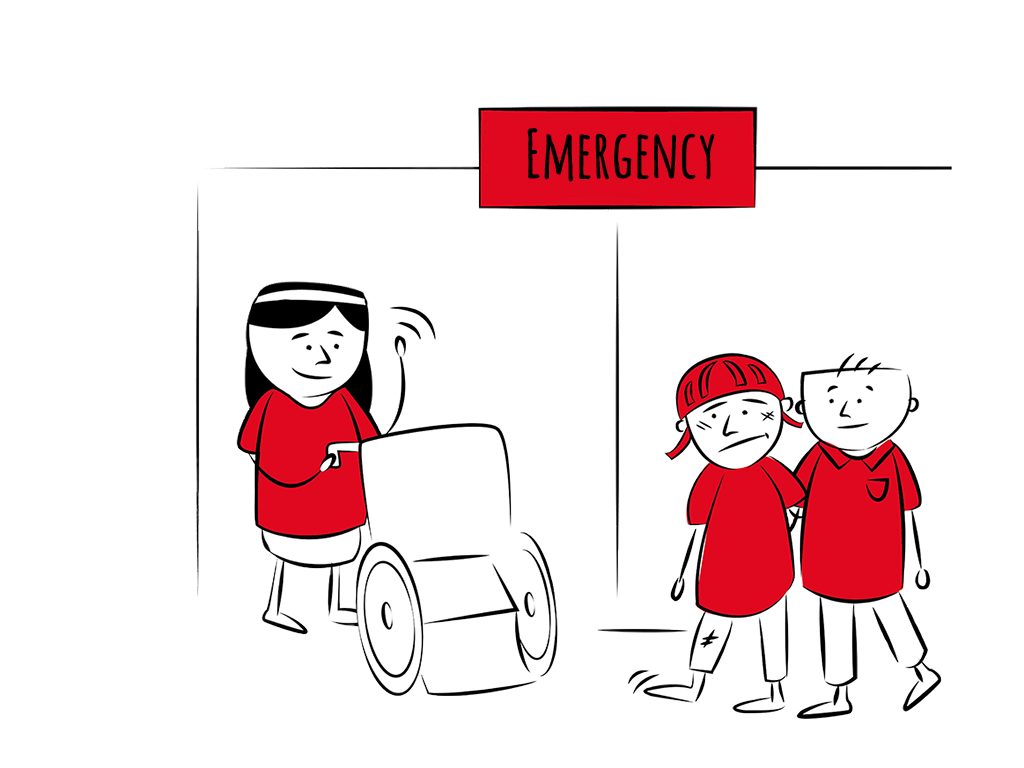

Emergency room—bad patient experience and reason for complaints
The importance of the emergency room to the hospital is usually underestimated. For years, the number of walk-in patients in particular has been increasing. For various reasons, patients even with minor problems report directly to the emergency room and not to their family doctor. For many patients, the emergency room is also their only experience of a hospital, as they do not need to be admitted to hospital. These developments make the emergency room the hospital’s calling card.
At the same time, many emergency patients have unpleasant news to report. Long waiting times are to be expected, but patients are often left uninformed without knowing what happens next. Patients tell their story repeatedly until they finally see a doctor who can actually tell them what the problem is and how to proceed. This, in turn, is exactly the reason why patients go to the emergency room: they want to see a competent doctor who can calm them and help them as soon as possible.
Especially in so-called minor cases, the total length of stay is disproportionate to the actual treatment effort. The result? Capacity problems, dissatisfied patients and employees, and, ultimately, too little time for more difficult cases. More space and more staff can bring some relief, but they do not solve the historical cause of the problem. Therefore, the emergency room system must be rethought.
Better quality and shorter waiting times in emergency rooms with Lean processes
Our work on emergency rooms aims to improve system performance and create an excellent patient experience. Lean principles help to develop simple and stable processes. Design thinking’s prototype-based approach ensures rapid progress and puts patient needs at the centre. We address the following problem areas, among others:
- Reduction of waiting times: unnecessary waiting times for patients and staff are eliminated as far as possible.
- Reduction of time to doctor: a high level of professional competence early in the process meets a central patient need and allows a more coordinated approach to the subsequent stay.
- Triage: traditional triage systems take a relatively long time without treatment decisions being made. Concepts such as these address this problem.
- Patient pathways: a separation between different types of patients (e.g., complex and simple patients or a separate pathway for minor cases) can calm and enhance
- Spatial design: infrastructure can significantly affect emergency room A preferably unidirectional patient flow and support processes that do not interfere with medical operations can significantly reduce complexity.
- Administration: supporting processes must be reduced to the bare It must be possible to complete documentation and service recording promptly. This improves efficiency, completeness, and quality.
- Duration of stay: patients should not take up an emergency bed any longer than necessary. This means that trivialities can be quickly resolved, and the discharge can be proactively controlled at an early stage.
- Leadership: the close cooperation of different departments and professional groups in an emergency makes it challenging to manage an emergency room and requires interdisciplinary approaches.
- Control of daily business: the unpredictability of emergency business is a given. Patients in need cannot simply be turned away. This makes it all the more important to maintain an overview and take countermeasures early on when a bottleneck is looming.
Our offerings
Analysis of the actual state
The basis of every implementation project is a solid analysis of the current status. We are interested in hard facts as well as subjective assessments and the everyday on-site situation. We combine different analysis approaches to create a rounded picture: data analyses (volumes, time stamps, personnel deployment, etc.); interviews (with frontline staff and managers); and observations on site (Gemba).
Process optimization during operation
In several simulation workshops, solutions are developed with the internal project team to address the focal points identified in the analysis. The focus is on implementation: the aim is to radically change the way of working in an emergency and to actively ensure sustainability.
Do you want to learn more?
Would you like to learn more about lean emergency room? We would be delighted to tell you more about our project work in an obligation-free conversation or answer any questions you may have. Our team is looking forward to hearing from you!

